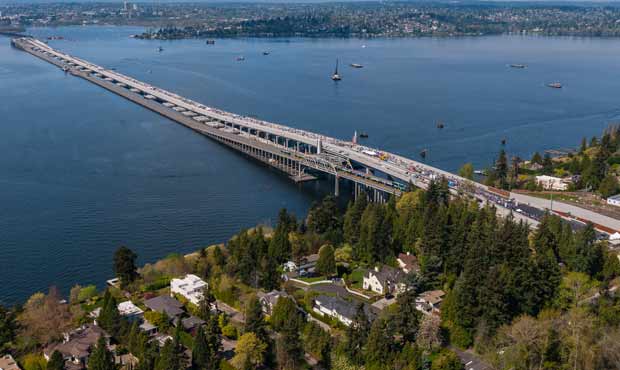Why the 520 Bridge was misunderstood as ‘structurally deficient’
Feb 15, 2017, 1:37 PM | Updated: 3:08 pm

A federal agency found the new 520 Bridge to be "structurally deficient." (WSDOT)
(WSDOT)
The new 520 Bridge over Lake Washington made it onto a list of thousands of “structurally deficient” bridges in the United States identified by the Federal Highway Administration.
At first glance, it looks like the new bridge is already having problems. But a closer look reveals the reason for the classification, and that it is a little mistaken.
Related: Take a video tour of the new 520 floating bridge
“The main thing to let people know is that we got a structurally sufficient bridge,” said Steve Peer with WSDOT.
The was published by the American Road & Transportation Builders Association. The information they used to compose the list was not up-to-date, according to Peer.
鈥淚t鈥檚 not their fault,” Peer said. “They are just going with the last information we gave … It was a snapshot in time when inspectors looked at anchor cables.”
Shortly before the bridge opened in April 2016, inspectors looked at the anchor cables on the new floating bridge and suggested that WSDOT replace them. They found anomalies and questioned if the cables could last 20 years. WSDOT has been replacing the cables in phases ever since, and is close to finishing the job.
The 520 bridge
Portions of the 520 bridge are still under construction. In January, crews towed the last of the old floating bridge’s 31 pontoons. This month, they are removing the former bridge’s fixed landings.
“Over the next few months, we will conduct some final system checks and adjustments to complete the commissioning of the new floating bridge,” according to the from the Washington State Department of Transportation.
Additionally, crews are working to complete the bridge’s west approach by mid-year. They will finish pouring the 1.2-mile-long concrete deck, as well as grind, pave, and stripe the roadway.
WSDOT is working to construct a new Montlake interchange and more. Work is expected to continue through 2018.
Even listed as聽“structurally deficient,” the term applies to bridges with spans that need rehabilitation or replacement. “Structurally deficient” bridges are not, necessarily, in immediate danger.












